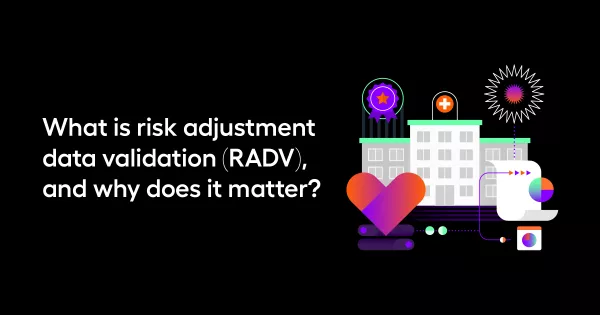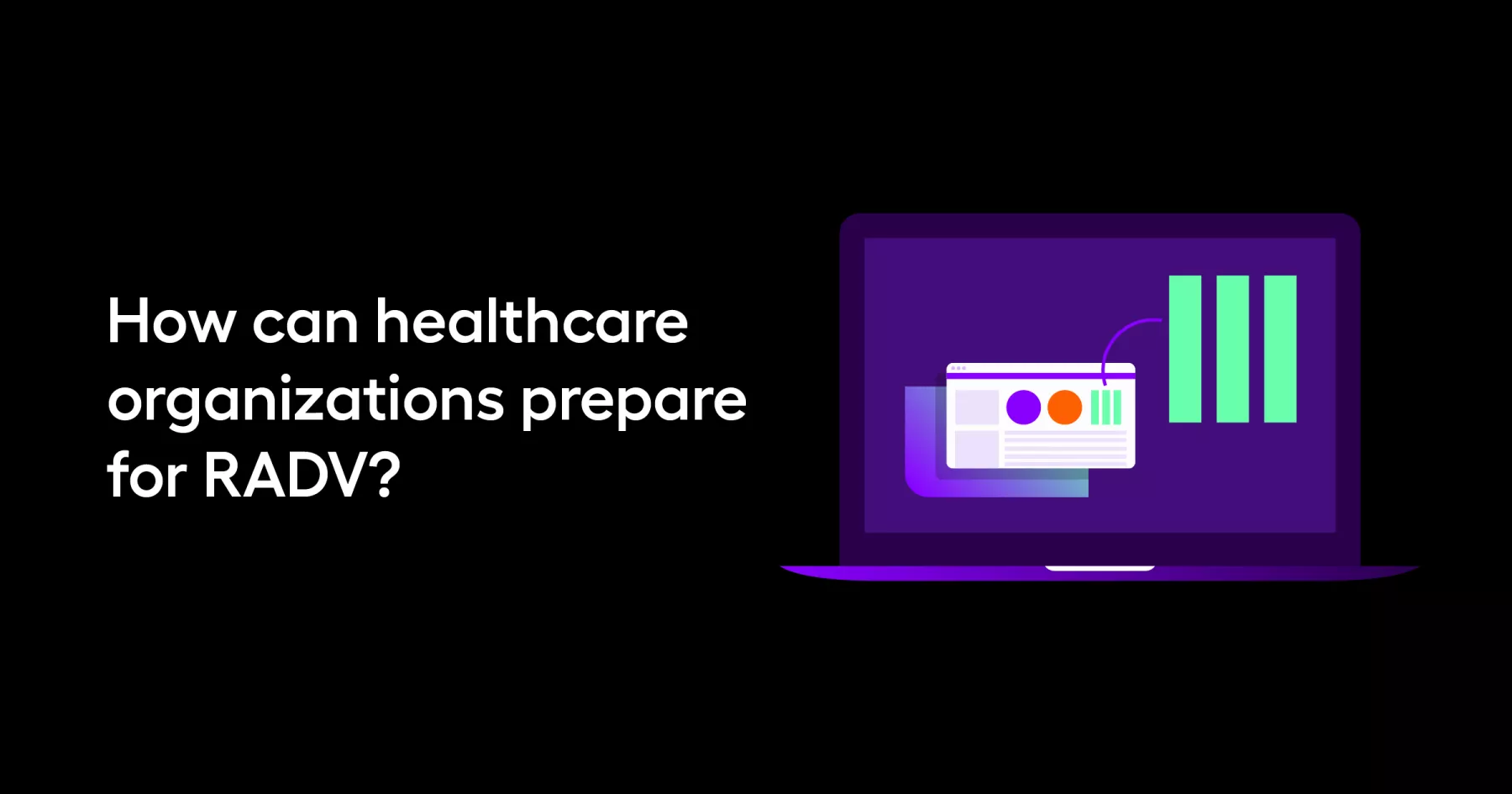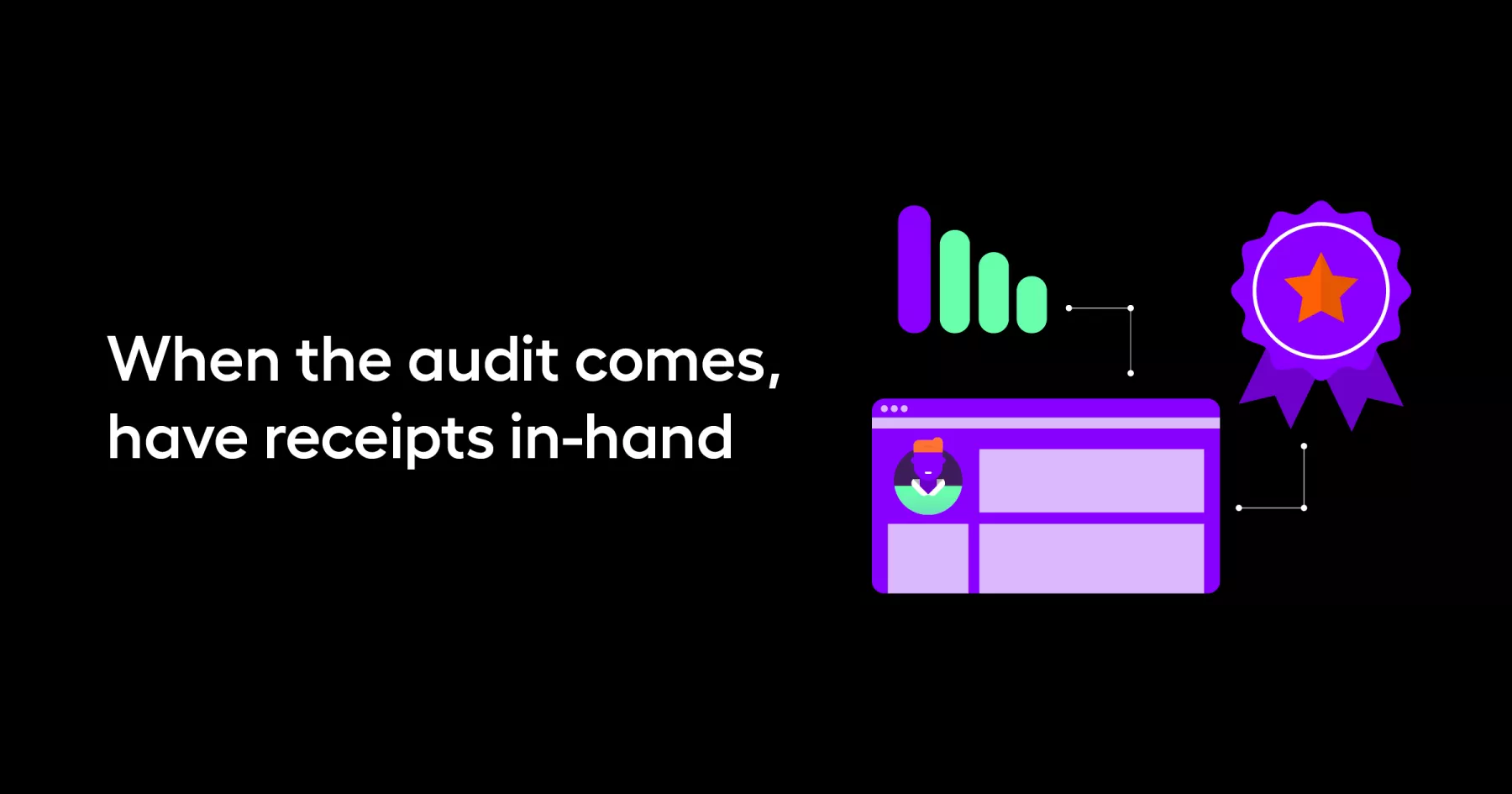What are the new RADV guidelines, and how will they impact healthcare?
CMS’s new standards for documentation and reporting are stricter than ever before, but with the right preparation, healthcare groups can meet the challenge.
In late January, the Centers for Medicare and Medicaid Services (CMS) finalized the details of the Risk Adjustment Data Validation program (RADV). For healthcare organizations, this is a major turning point — there are a range of implications, but the main takeaway is that CMS’s standards for accurate coding are growing stricter.
In a Byte-Sized Booth Talk at HIMSS, Solution Engineer Christine Knox and Application Enablement Manager Julia Kelly discussed these new changes, charting what to expect, the hurdles they anticipate for employees across healthcare organizations, and how efficient data workflows will streamline the journey.

What is risk adjustment data validation (RADV), and why does it matter?
At its core, RADV is about making sure the care a patient received matches the billing and documentation submitted by a healthcare provider. Using indicators like ICD codes, dates of service, and even notes, hospitals and medical groups can describe exactly what diagnoses a patient received and the course of treatment they were given.
With the vast amount of data an organization produces, this is a difficult prospect on its own, but it’s complicated even further by healthcare’s various financial models. If CMS reimburses or is owed money from an institution that cares for Medicare or Medicaid patients, the amount of money exchanged could depend on whether that group works in value-based care or strictly within the fee-for-service model.
“CMS is looking at the codes that are submitted for risk capture, comparing that back to the EHR source, and making sure they match,” Knox explains.
With the new rules, data from a patient’s EHR and claim submissions will need to match to a new, more exacting degree. Data from 2018 forward will be extrapolated under this new format.
“Historically, there’s always been a fee-for-service adjustor, which means there’d be a little more wiggle room for errors across your population. That adjustor is going away,” Knox explains.

How will the new RADV guidelines affect providers?
Medical and payer coding teams are the first group to brace for RADV’s changes, but the increased need for accuracy, transparency, and detail will ripple beyond administrators. It’s going to impact providers, too, necessitating more comprehensive documentation of patient visits and treatments.
“The pressure is on,” Knox notes. “There’s going to be intense pressure from your payer organizations and other partners to make sure your EHR documentation is updated, accurate, and fully capturing the full risk and ICD codes for your population.”
The pressure is on. There’s going to be intense pressure from your payer organizations and other partners to make sure your EHR documentation is updated, accurate, and fully capturing the full risk and ICD codes for your population.
In the wake of this pressure, a data platform that allows care teams and coders to collaborate is a major benefit. A condition capture workflow that allows both of these end users to contribute means more accurate, communicative coding, and it engages everyone with a major stake in this new ruling.

How can healthcare organizations prepare for RADV?
Organizations are justifiably anxious about meeting these new standards, but there are tools and workflows that can reduce the tumult and keep the transition seamless.
Data is central to this entire process, so an analytics platform is an excellent way to track and document patients’ engagement with their providers and care teams. When browsing the market, it’s important to look for solutions that are highly customizable, Kelly says, because providers and payers have variable CDI (clinical documentation improvement) workflows, end users, and overarching goals.
“We treat our customers as individuals, not as data points,” Kelly says. “We understand that everybody’s going to be coming to us with their own existing workflows, their own unique sets of end users, and most importantly, their own organizational KPIs.”
This adaptable approach is evident in Assess, a tool that's part of Arcadia’s platform, where users can automatically identify patients with actionable risk conditions and surface corresponding codes from different sources in a centralized interface.
"This streamlined presentation of historical, current, and suggested conditions allows users to quickly pinpoint documentation gaps and initiate revisions in real time," Kelly adds. "Teams may also add supplemental evidence to further support and document claim-based conditions. Available fields include date of service, provider NPIs, free-text notes, or even attachment features to support EMR screenshots."
We treat our customers as individuals, not as data points. We understand that everybody’s going to be coming to us with their own existing workflows, their own unique sets of end users, and most importantly, their own organizational KPIs.
When it's time to retroactively revise RADV records, the best workflows offer bi-directional communication between different users. Assess’s robust auditing tools facilitate the direct transmission of condition-level feedback between coders and providers. This empowers providers to both correct minor typos and engage with broader education around optimal clinical documentation workflows.

When the audit comes, have receipts in-hand
The new guidelines leave little room for error, so healthcare institutions need an ironclad process for data storage, entry, and review above and beyond a standard EHR. The good news? It’s possible to establish just that, and to provide a user-friendly infrastructure that encourages thorough documentation.
Reach out to a member of Arcadia’s sales team today to ensure you’re not leaving any information on the table, recouping what you’ve earned providing excellent care. In the meantime, watch Christine and Julia’s full discussion of RADV below.
